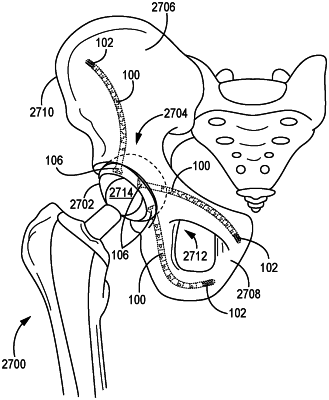| CPC A61B 17/742 (2013.01) [A61B 17/70 (2013.01); A61B 17/72 (2013.01); A61B 17/7208 (2013.01); A61B 17/7233 (2013.01); A61B 17/8897 (2013.01)] | 21 Claims |

|
1. A method, comprising:
forming a curved pathway in an intramedullary space of a pelvic bone;
inserting, into the curved pathway, a bone-fracture fixation device in a flexible configuration, the bone-fracture fixation device having a proximal end portion and a distal end portion;
securing the distal end portion of the bone-fracture fixation device along the curved pathway within the intramedullary space;
securing the proximal end portion of the bone-fracture fixation device to an artificial hip socket positioned at a native acetabulum of the pelvic bone; and
transitioning the bone-fracture fixation device from the flexible configuration to a rigid configuration while the bone-fracture fixation device has a curved shape.
|